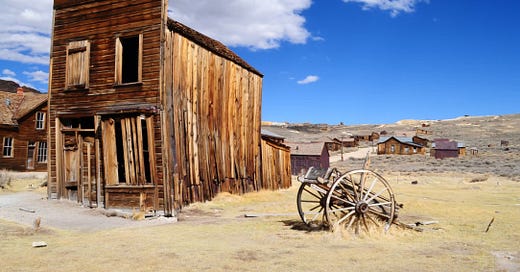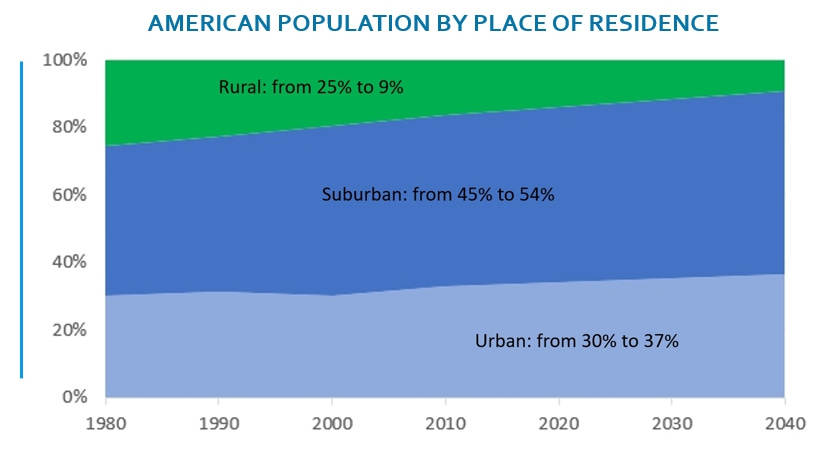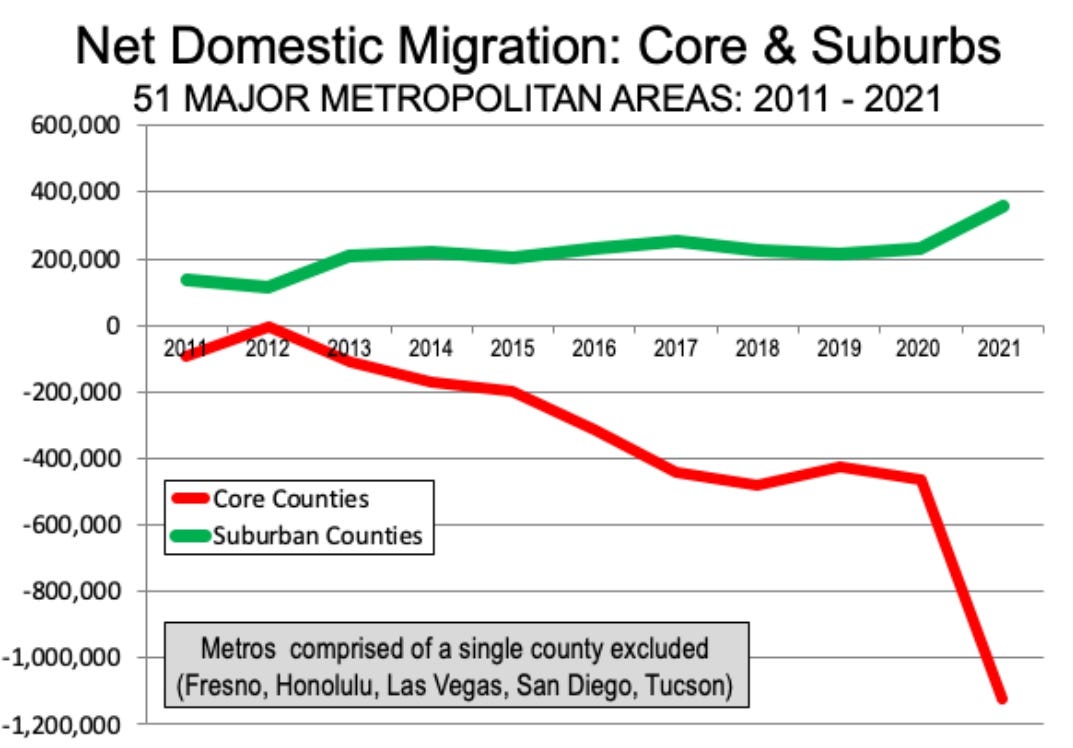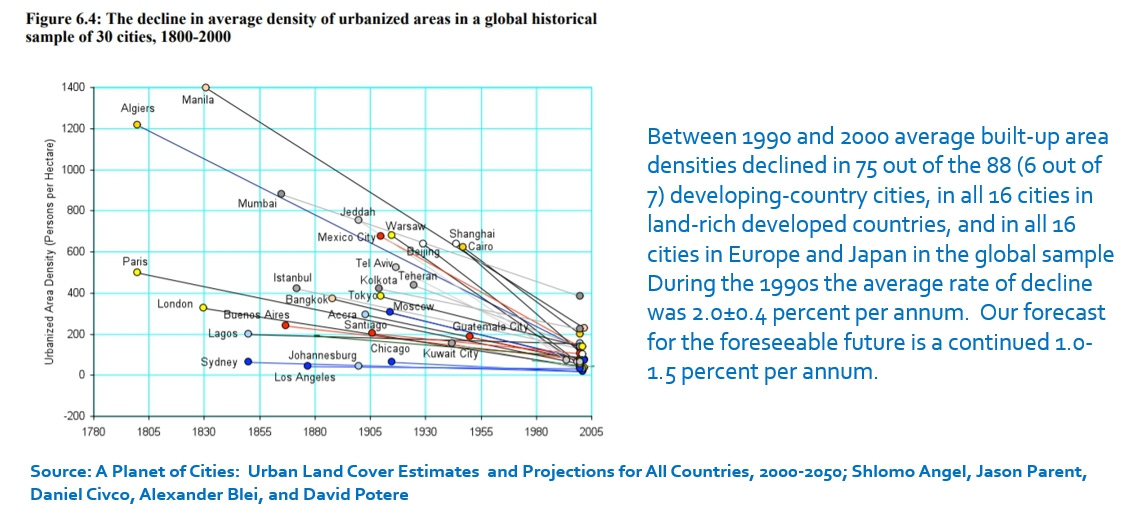It is an ironclad belief among urbanists1 that sooner or later we will all move to the cities, and that in this process we will abandon our cars in favor of (old school) public mass transit or (new school) micromobility (bikes, scooters, and more2). The latter half of this credo makes sense: a car is much less useful in central Manhattan NY (where only 25% of households own even one car), than in quasi-rural Manhattan KS (where the average household owns two vehicles). And so if this urban stampede occurs, car companies (including even new-entrant EV builders) should be worried.
So, is this migration to the cities taking place? We’ll deal only with America here, but hint at a broader global trend at the end of this post. And we’ll focus on the long-term trajectory, as the eventual impact of the recent gyrations caused by the pandemic is as yet unclear. (These gyrations include a flight from major urban cores (e.g. New York City) early in the pandemic, and a boost in the population of minor urban centers (e.g. Boise).
The short answer is “In the USA, no, it is not.” Thanks to a statistical quirk in Census Bureau data, the federal government essentially classifies any place with more than 2,500 people as “urban.” Thus places like Ajo, Arizona, qualify as urban. By this definition of course the USA is becoming less rural and more urban, and this fact has been bouncing around for so long that it has become accepted wisdom. But this trend is not the same thing, however, as “everyone is moving to the cities,” since if we split the urban category into truly urban and suburban, using the CB’s own finer definitions, we get this very different picture:
Urban cores continue to grow (picking up 7 points of population share by 2040), but suburban rings around those cores grow faster (gaining 9 points). Now, since we know that suburban households each own more cars than urban households (2.4 to 1.0), the likely net impact on car sales, holding everything else equal3, is positive, not negative.
For another view on the same trend, see this chart, from Wendell Cox at New Geography, using Census data again:
We can clearly see the hit to urban cores that Covid provided, but we can also see that the trend toward the suburbs and away from city centers was in place well before the pandemic. In short, urbanization seems no threat to American “car culture,” at least at present.
Now as to the rest of the world. Obviously rates of urbanization vary immensely around the globe, but one thing is clear: urban density is falling, almost everywhere. Put simplistically, to become wealthier people move out of rural areas to urban areas, and then once in those urban areas, as they do become wealthier, they seek more room. Perhaps by having fewer children, perhaps by shifting to the less dense suburbs of cities. This movement over time may serve to provide more room for cars, as persons per square kilometer drops. We cannot conclude that from these data (which I do need to update!), but that remains my hypothesis:
The world is suburbanizing as much as it is urbanizing. And suburbs are where cars thrive.
Next time: well, what about ridehail? Why own a car if we can just Uber Everywhere?
“an advocate of or expert in city planning” formally, but informally anyone who believes cities are the future of humanity, with rural areas to be restored to their natural state, and suburbs to be plowed under. The crime of suburbs being that they are (among other things) racist, elitist, destructive of the environment, productive of traffic congestion, and above all the locus of soul-crushing boredom and conformity. This view goes way back: note Lord Byron wrote in 1817 (in his poem Beppo) that one of the protagonist Laura’s friends was “vulgar, dowdyish, and suburban.”
For the ultimate in micromobility “more,” see Swedish pogo-stick-sharing company Cangoroo (cangoroo.tech/): “Jump Into the Future!”
E.g., the impact of ridehail, car share, etc. We will visit this topic in a future post.







